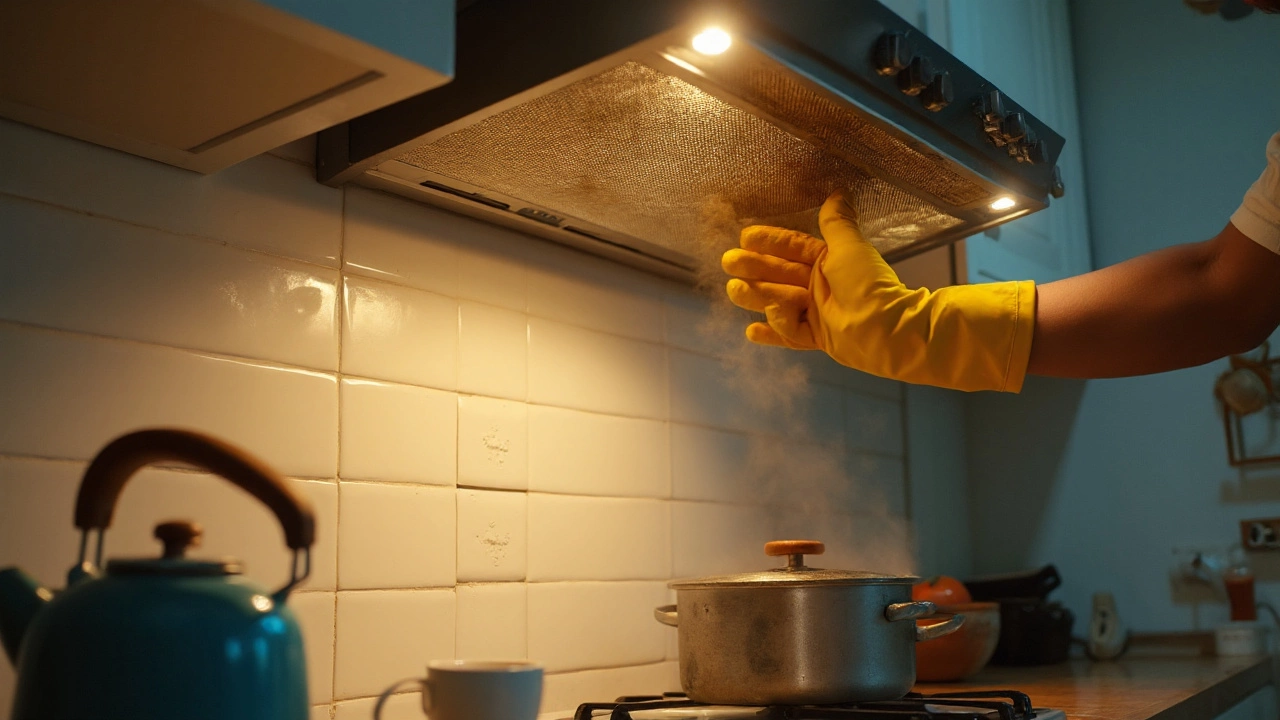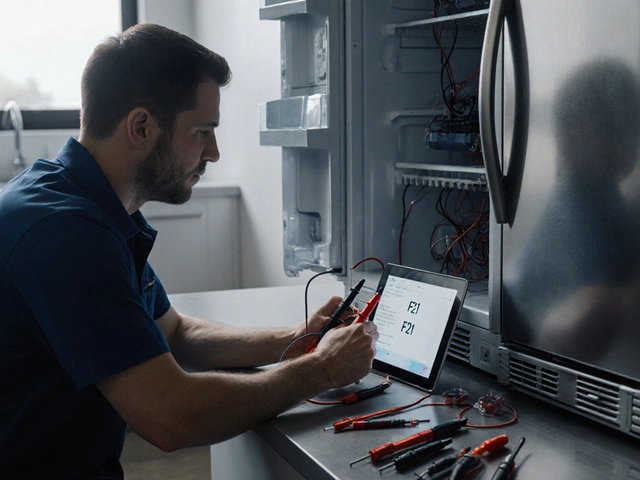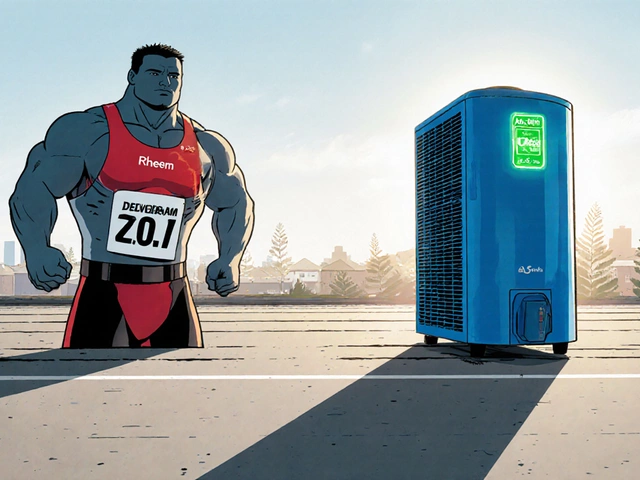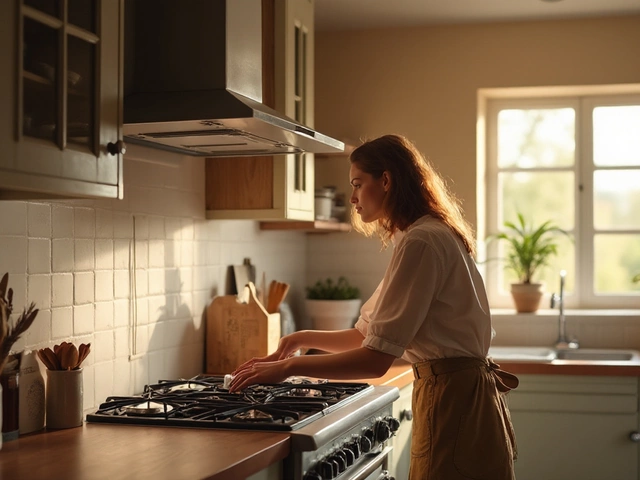People tend to think the rangehood will just keep chugging along forever. It won’t. Most kitchen extractor fans last 7-15 years, but the spread is wide. Use it hard, skip the cleaning, or run it with bad ducting and you’ll be eyeing a replacement sooner. Take care of it, and it’ll outlive your toaster by a mile. I’ll give you the real-world lifespan numbers, the exact habits that shave years off, and the simple fixes that add them back. I’m writing from Auckland, so I’ll also flag New Zealand-specific rules, costs, and coastal quirks that matter here.
- TL;DR: Budget recirculating hoods last ~5-7 years; mid-tier ducted 8-12; premium ducted 12-15+ if maintained.
- Usage drives lifespan: High-heat frying, gas hobs, and heavy grease cut life fast. Induction and regular cleaning extend it.
- Maintenance changes everything: Wash mesh filters monthly, deep-clean internals twice a year, replace charcoal filters every 3-6 months.
- Replace vs repair: If the motor or board dies after 8-10 years, replacement is often cheaper than repair in NZ.
- Costs (NZD): New hood $150-$1,500+, install $200-$600, ducting fixes $150-$400. Ducting outside beats recirculating per NZ Building Code G4.
How long do extractor fans really last-and what pushes the number up or down?
If you just want the number: expect 7-15 years. Here’s how that breaks down in normal Kiwi kitchens.
| Hood Type / Tier | Typical Airflow (IEC 61591) | Motor Type | Average Lifespan (yrs) | Assumed Daily Use | Common Failure Points | NZ Installed Cost (approx) |
|---|---|---|---|---|---|---|
| Budget under-cabinet (recirculating) | 200-350 m³/h (55-95 L/s) | AC shaded-pole | 5-7 | 20-30 min | Grease-clogged filters, noisy bearings, light switch | $250-$550 |
| Mid-tier canopy (ducted outside) | 400-700 m³/h (110-195 L/s) | AC or brushless DC | 8-12 | 30-45 min | Fan capacitor, control PCB, warped duct flap | $600-$1,400 |
| Premium/pro-style ducted | 800-1,200+ m³/h (220-330+ L/s) | Brushless DC | 12-15+ | 45-60 min | LED driver, speed controller, duct vibration | $1,200-$2,800 |
| Downdraft (pop-up) | 500-700 m³/h (135-195 L/s) | AC/DC mix | 7-10 | 30-45 min | Lift mechanism, seals, PCB | $2,500-$5,000 |
| Ceiling cassette (remote motor) | 600-1,000 m³/h (165-280 L/s) | Remote DC | 10-15 | 30-45 min | Remote motor bearings, duct leaks | $1,800-$4,000 |
Those ranges assume you clean filters on schedule and your ducting isn’t a nightmare. The quickest way to cut lifespan is to ignore grease. Grease heats up, hardens, then grinds motor bearings and traps heat around the windings. A fan that runs hot ages fast.
Here’s a simple way to sanity-check your situation using motor-hours. Most domestic fan motors survive somewhere around 5,000-20,000 running hours before bearings or insulation give up. If you average 30 minutes a day, that’s ~182 hours a year. A 10,000-hour motor, used that way, could theoretically see 50-55 years. Real life isn’t that kind because heat, grease, vibration, and bad ducting all eat into that number. Consider 25%-50% of the theoretical hours as a usable target once the real world gets its say.
- Cooking style: Wok cooking, deep frying, searing on gas? Expect shorter life unless your fan is sized large and cleaned often. Induction and lid-on simmering go easier on fans.
- Ducting: Short, straight, smooth, and outdoors wins. Long runs, kinks, flexi-duct, or recirculating mode all add back-pressure, heat, and noise-shortening life. AS/NZS 1668.2 ventilation practice and MBIE’s G4 Ventilation both favour proper extraction outdoors.
- Environment: In coastal Auckland, salt air accelerates corrosion on aluminium and circuit boards. A garage laundry nearby adds humidity. Store-bought charcoal filters saturate faster in damp homes.
- Build quality: Brushless DC motors and metal baffle filters last longer than basic AC motors and thin mesh. Heavier housings rattle less, which helps bearings.
- Installation: No isolator switch, leaky joints, or a roof cowl that flaps in the wind? Those show up later as premature noise and motor strain.
- Standards and ratings: Airflow figures tested to IEC 61591 are more credible. Look for warranties of 3-5 years on motor/control for a durability signal.
If your hood is under 5 years old and loud, look at ducting and grease before you blame the motor. If it’s 10+ years and volume has dropped, the motor may be tired-especially if you’ve got a history of heavy frying or a recirculating-only setup.

Maintenance that adds years: simple schedule, quick wins, and mistakes to avoid
Think of your fan like a car’s air filter. Keep the airflow clean, and the engine (motor) stays happy. You don’t need fancy tools-just a habit.
- Every week (takes 10 seconds): Run the fan for a minute after cooking stops. This clears moisture and keeps grease from settling in the duct.
- Every month: Wash mesh filters. Soak in hot water with dish soap and a teaspoon of baking soda. Skip caustic oven cleaners-those pit aluminium. Rinse and air-dry fully before refitting. Baffle filters can go every 2-3 months instead.
- Every 3-6 months: If you’re recirculating, replace charcoal filters. If you cook curry, bacon, or steak often, it’s closer to 3 months. If you barely cook, you might stretch to 6, but odor creep is your cue.
- Twice a year: Deep-clean the impeller and housing. Isolate power. Remove filters. Wipe the fan wheel and accessible surfaces with citrus degreaser on a cloth, not sprayed directly. Keep liquids away from the motor and PCB. If you see black dust, that’s bearing wear-time to monitor noise.
- Annually: Check the duct. Make sure joints are taped with aluminium HVAC tape (not cloth duct tape), the backdraft flap swings freely, and the roof/wall cowl is clear of bird nests and fluff. Replace crushed flexi with rigid smooth duct where possible.
- Every 2-3 years: If you’re in a grease-heavy kitchen, get a tradie to pull the duct and clean it. It pays off in quieter operation and lower motor temps.
Pro tips I’ve learned in Auckland kitchens:
- Start early: Turn the fan on 1-2 minutes before the pan hits the hob. It establishes airflow and catches more steam.
- Use the right speed: High for frying, medium for simmering, low for lingering odors after you finish. Running max speed all the time just adds noise and stress.
- Lamp upgrades: If your halogen bulbs keep blowing, swap to manufacturer-approved LED replacements with the correct driver spec. Random LEDs can overload the driver and cook the board.
- Seal the cabinet cut-out: If you have an insert hood, seal gaps with foam strip so the fan doesn’t pull air from the cabinet instead of the cooktop.
- Induction = easy life: If you’re renovating and lifespan matters, induction hobs generate less combustion moisture and soot than gas, which is easier on the fan and duct.
Big mistakes to avoid:
- Water on the motor: Don’t spray degreaser upwards into the motor cavity. Wipe with a damp cloth only.
- Dishwasher filter damage: Some mesh filters bend or lose finish in the dishwasher. If you do use it, top rack only, gentle cycle, and no caustic powder.
- Too-small ducting: A 150 mm outlet choked down to 100 mm adds noise and heat. Match the hood’s outlet size, and avoid more than two tight bends.
- Recirculating forever: NZ’s G4 Ventilation allows recirculation in some situations, but ducting outside removes moisture and cooking by-products. If you own, plan to upgrade to ducted.
Maintenance not only adds years but also keeps performance honest. A “tired” fan is often just a greasy one. The first thing most techs do on a noisy call-out is clean and balance the basics.
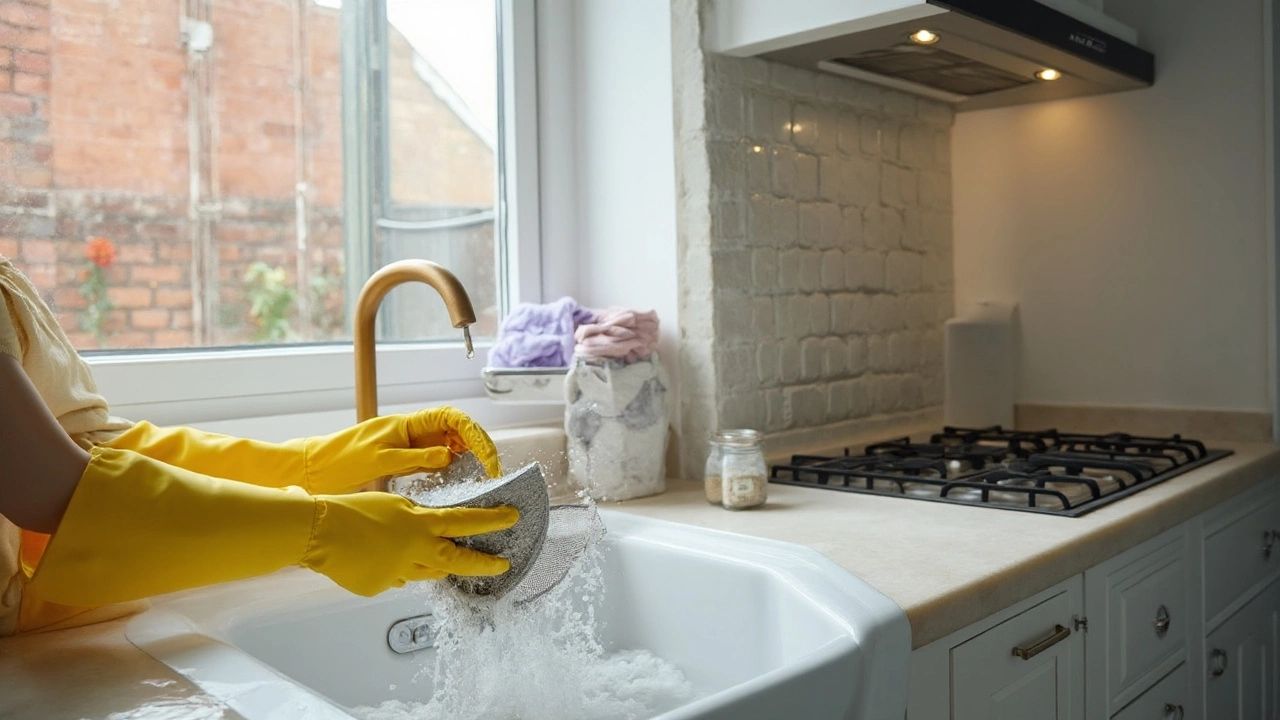
Repair or replace? Costs, quick troubleshooting, mini‑FAQ, and your next steps
Here’s the straight call on where the money makes sense.
Repair vs replace-use this decision tree:
- Is the hood under 5 years old, with poor suction? Clean filters, check duct obstructions, and inspect the backdraft damper. If noise improves after cleaning, you’ve bought years for free.
- Is the unit 5-8 years old with a single fault (lights or a switch)? Worth a repair. Typical parts/labour in NZ: $120-$280 for lights/driver, $150-$350 for a switch or capacitor.
- Is the motor whining, grinding, or struggling to start? If under 8 years and a decent brand, a motor or capacitor swap can be worth it. If 8-10+ years, consider replacement-new units are quieter, more efficient, and a motor/PCB combo can cost half a new hood.
- Control board dead? On mass-market models, boards cost $200-$400 plus labour-and may be unavailable after 7-10 years. If your ducting is poor anyway, put the money toward a new, well-ducted hood.
- Cabinet or chimney rusted, or fan heavily warped by heat? Replace. Structural issues don’t fix well.
NZ cost guide (2025):
- New hood: $150-$400 (basic recirculating), $400-$1,200 (mid-tier ducted canopy), $1,200-$3,000+ (premium, ceiling cassette, or remote motor).
- Installation: $200-$600 for like-for-like. New duct runs, roof penetrations, or remote motors push costs higher.
- Duct fixes: $150-$400 to replace crushed flexi with rigid duct and proper cowls.
- Common repairs: $120-$350 (lights/driver), $150-$350 (capacitor/switch), $250-$600 (motor), $250-$500 (control PCB, if available).
Quick troubleshooting (do these in order):
- No suction but motor runs: Filters clogged; wash or replace. Check for a blocked duct or a jammed backdraft flap. Make sure the chimney cover isn’t pinching the outlet.
- Very loud on high: Duct too small, too long, or crushed. Replace flexi with smooth rigid and reduce bends. Check motor mounts for looseness.
- Fan hums but won’t spin: Failed start capacitor or seized bearings. A tech can swap the cap; seized bearings usually mean a motor.
- Lights dead, fan fine: LED driver or switch failed. Replace driver with the manufacturer-rated part.
- Grease dripping: Filters saturated or the hood is installed too high/low. Wash filters and verify the height: typically 600-650 mm above electric, 650-750 mm above gas, per manufacturer specs.
- Smells linger: For recirculating mode, replace charcoal filters. For ducted, let it run 10 minutes after cooking. Inspect duct joints for leaks.
Mini‑FAQ:
- Does brand matter for lifespan? Yes, mostly via motor quality and parts availability. A 3-5 year motor/parts warranty is a strong signal.
- What airflow should I aim for? For a 60 cm hob with light cooking, 300-500 m³/h (80-140 L/s) is fine. For a 90 cm hob or gas-heavy cooking, 600-900 m³/h (165-250 L/s) with 150 mm ducting is safer.
- Can recirculating hoods meet NZ rules? G4 Ventilation allows them, but they don’t remove moisture. If condensation is an issue, duct outside.
- How often should I replace charcoal filters? Every 3-6 months depending on cooking. If your kitchen smells like last night’s dinner by breakfast, you’ve waited too long.
- Will an induction hob make my fan last longer? Usually yes-less soot and moisture than gas means less grime and stress on the fan.
- Is noise a sign of end-of-life? A rise in noise over time is often the first sign. Clean first. If noise persists and airflow drops, bearings are likely wearing.
What about standards and compliance?
- Airflow testing: IEC 61591 is the common test standard you’ll see on spec sheets; it makes airflow numbers comparable.
- Ventilation practice: AS/NZS 1668.2 covers ventilation in buildings. For houses, NZ Building Code clause G4 Ventilation sets performance rules. Ducting outdoors with a proper cowl remains best practice.
- Electrics: Appliance installation must comply with AS/NZS 60335 series for safety. Use a licensed electrician for wiring or an isolator switch.
If you’re choosing a new hood to maximise lifespan, use these rules of thumb:
- Pick the quietest unit at the airflow you need: Lower sone/dB ratings usually mean better motors and smoother airflow. Under 60 dB(A) on mid-speed is comfortable in open-plan living.
- Match duct size to outlet: If the hood wants 150 mm, give it 150 mm. Don’t choke it down.
- Prefer baffle filters over flimsy mesh: They’re easier to clean and hold shape better over time.
- Look for brushless DC motors: They run cooler and can outlast basic AC motors.
- Check parts support: Ask how long the brand stocks motors, boards, and filters-aim for 7-10 years.
Want a quick maintenance checklist you can actually keep?
- Monthly: Wash filters (mesh monthly, baffle every 2-3 months).
- Quarterly: Wipe impeller and housing, check charcoal filters.
- Yearly: Inspect duct, flap, and cowl; retape any loose joints.
- Every 2-3 years: Professional duct clean if you fry often.
- Anytime: If noise rises or airflow drops, clean first, then troubleshoot.
Energy and running costs matter too. Many hoods draw 65-200 W on typical speeds, a few dollars a year if you use them sensibly. The bigger cost is performance loss if you don’t maintain it-longer run times to clear the air and more heat under the hood, which shortens life.
Next steps based on who you are:
- Owner-occupier (Auckland): Check your ducting today. If it’s crushed flexi or venting into the ceiling, plan an upgrade to rigid duct and an external cowl. It’s the single best thing you can do for lifespan.
- Renter: Wash filters monthly. If odor is constant, ask your landlord for fresh charcoal filters or a ducted upgrade-point to G4’s focus on ventilation and moisture control.
- Landlord/Property manager: Standardise on a reliable mid-tier ducted model with 150 mm duct and baffle filters. Keep spare filters on hand, and log a 12‑month check for duct and flap.
- Renovating soon: Choose induction if you can, size the hood to 600-900 m³/h depending on hob width and cooking style, and budget for proper rigid duct with minimal bends. Add an isolator switch for safe servicing.
If you remember nothing else: clean filters, fix ducting, and use the right speed. Do those three, and you’ll be much closer to the 12-15-year side than the 5-7-year side-no magic required.
